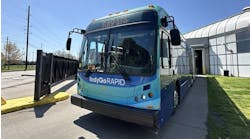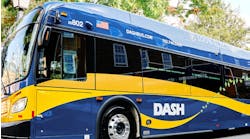Another round of transit network improvements starts Sept. 26, as Metro Transit boosts service on routes across Seattle and King County. Light rail service will also increase during rush hours as Sound Transit prepares to open the University Link light rail extension north of downtown Seattle in 2016.
Metro is implementing expanded transit service on commute routes around King County as a result of partnerships with the city of Seattle and the state, budget savings, and stronger than projected sales tax revenues.
In Seattle, Metro is implementing the second round of new service under the city of Seattle's voter-approved Proposition 1, which raises an estimated $45 million per year for Metro transit service. The additional 9,000 hours of monthly service will increase frequency on 27 bus routes throughout the city.
In June, Metro added the first 9,000 monthly service hours on 53 routes in Seattle in the first round of service expansion funded by city voters.
"We're putting more service into routes serving communities throughout the county, to meet the region's growing demand," said King County Executive and Sound Transit Board Chair Dow Constantine. "We're also preparing to revolutionize the way we think of getting around downtown Seattle and the University of Washington, with the upcoming extension of light rail to Capitol Hill and Husky Stadium."
"Thanks to the voters of Seattle, we continue to expand frequent, reliable transit throughout the city," said Seattle Mayor Ed Murray. "We continue to invest in expanded bus service and the street infrastructure that allows buses to move more smoothly through traffic to get you there faster."
Details are posted online, listing 34 Metro routes in Seattle that will see an increase in service of 113,000 annual service hours: routes 1, 2, 3, 4, 5, 7, 8, 9, 11, 12, 13, 14, 16, 21, 25, 27, 30, 32, 33, 40, 41, 43, 44, 48, 49, 66, 67, 68, 70, 71, 72, 73, 75, and 76.
Routes within Seattle also will no longer have "reduced weekday service" during certain holiday periods, such as Veteran's Day, the Friday after Thanksgiving, or the week between Christmas and New Year's Day. Under Executive Constantine's Community Mobility Contract with Seattle, Metro added 110,000 annual service hours in June on 53 routes in Seattle.
Meanwhile, Metro is also investing up to $89 million in improved service and new buses this fall and next spring, targeting more than 50 routes. The effort starts this month with 13 bus routes that serve north, east, and south King County communities.
This investment will target chronic overcrowding and service delays in some of the busiest corridors in cities such as Kent, Tukwila, Black Diamond, Bellevue, Issaquah, and Bothell. Metro is able to make these and other upcoming investments in service and new buses thanks to savings from lower diesel prices, state grants, and stronger than projected sales tax revenues. Improved service will be on routes 124, 143, 157, 158, 159, 169, 212, 218, 221, 232, 237, 312, and RapidRide E Line.
Further service improvements are on the horizon as the transit network grows.
Changes in the Downtown Seattle Transit Tunnel
Beginning September 28, Sound Transit also increases its train service in the downtown tunnel to every six minutes during peak morning and afternoon rush hours as it prepares for service to Capitol Hill and UW next year. Metro peak weekday commute routes 76, 77, 216, 218, 219, and 316 will relocate to surface streets, while other all-day routes will continue service in the tunnel.
The Seattle Department of Transportation has led a joint effort with Metro, Sound Transit, the Washington State Department of Transportation, and Community Transit on making key surface street improvements to keep bus traffic moving downtown. Seattle continues to expand its network of bus-only lanes and traffic signals that prioritize buses.
To help keep service moving reliably and smoothly in the Downtown Seattle Transit Tunnel during this time of transition, Metro plans a rider information campaign. Besides having fare ready, riders are reminded to keep paths clear and not to run after or otherwise delay bus departures. Also, drivers will focus boardings at designated bays, discouraging riders from boarding buses that are third in line on the platform. Also, additional Metro boarding assistants will be stationed at International District Station.

